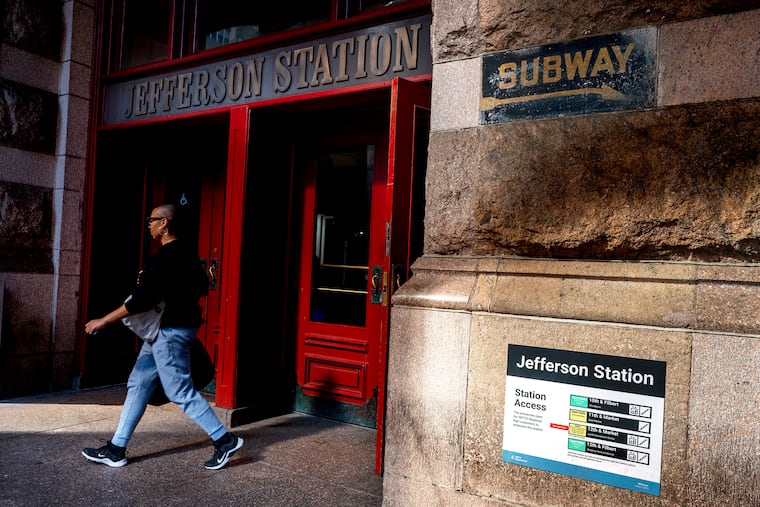A transit gateway worthy of Philadelphia | An Arena for All
Jefferson Station is already a vital link in Philadelphia’s transit network. Now, the proposed arena offers a chance to build on that legacy and make it a centerpiece for transit.

Philadelphia’s Market Street, the city’s Main Street, remains haunted by unrealized potential. With the proposed 76 Place arena atop Jefferson Station now before City Council, we face a pivotal moment. Will we transform Jefferson Station into a world-class transit hub, or treat transit as an afterthought?
Jefferson Station is already a vital link in Philadelphia’s transit network, connecting Regional Rail with the Market-Frankford Line, PATCO, and various buses. Its construction in the 1980s as part of the Center City Commuter Connection unified separate rail systems and reshaped transit in the city. Now the proposed arena offers a chance to build on that legacy and make Jefferson Station a centerpiece for transit.
The current proposal fails to take advantage of this opportunity. While the arena might be the core focus of this development plan, it is undeniable that 76 Place is also, by its very location, a transit-oriented development. But rather than seamlessly integrating with Jefferson Station and enhancing its utility for daily riders and arena attendees alike, the design largely ignores transit infrastructure.
We need only look to Penn Station and Madison Square Garden in New York as a cautionary tale, wherein the old Penn Station was unceremoniously demolished in 1963-1966 to make way for Madison Square Garden above. Penn Station was transformed from a majestic travel gateway into a generic underground transit hub lodged beneath the bulk of the arena development above. After decades of regret, New York opened Moynihan Train Hall in 2021, restoring light, grandeur, and civic pride to the transit experience.
Other recent investments in transit hubs show how thoughtful design can make them into iconic destinations and catalyze broader revitalization. Boston’s TD Garden and North Station demonstrate how an arena can integrate with transit, with an iconic entrance and vibrant, mixed-use development that connects seamlessly with the city. In San Francisco, the Salesforce Transit Center integrates a modern bus terminal with a public rooftop park, showcasing how transit infrastructure can combine utility with community-focused iconic design. London’s expansion and revitalization of King’s Cross/St. Pancras Stations set the tone for distinctive placemaking and transformed the area into a thriving hub of transit, retail, and public space.
The current design for 76 Place, however, does not raise the bar like these other cities. Instead of opening Jefferson Station with more natural light and improved accessibility, the arena has programmed operational space at and below the ground floor, leaving little room for transit. It also does not account for needed upgrades to nearby transit stations like the 11th Street Market-Frankford Line stop, or address how the arena will handle event-day surges in ridership without straining SEPTA’s already stretched resources.
If the goal is to have 40% of attendees arrive by public transit — a target touted by the 76ers organization — the design must actively encourage and facilitate that behavior. This means creating a station that is not just functional but inspiring, a place both commuters and event attendees will want to use.
To truly realize this opportunity, the development team must address these key questions:
How can we provide more space and light within the station? Could the design raise the arena’s bowl to minimize operations on the ground floor and make room for a spacious, inviting transit hall?
Can we invest in additional rail infrastructure to meet anticipated peak demand? With the arena projected to draw large crowds, ensuring there are enough trains during peak times is essential to prevent bottlenecks and keep the transit network working efficiently.
How can we retain concourse-level retail and address increased passenger flow? A successful redesign must avoid the pitfalls of cramped, spartan corridors. The concourse should retain ample space for passenger movement while integrating retail to ensure convenience without compromising accessibility.
What design and materials can create a true sense of arrival and place? The station should inspire pride and incentivize transit use through high-quality materials, an iconic design, and public art that reflects Philadelphia’s culture and character. A well-lit, active station that feels safe, beautiful, and functional is critical to Jefferson Station, and the arena’s, success.
If we get this right — if Jefferson Station can be a true civic asset — the ripple effects could extend along the corridor, sparking renewed investment and encouraging development that supports a thriving Market Street.
Let’s ensure 76 Place is not just an arena, but a true civic asset that benefits all who pass through its doors.
Harris M. Steinberg, a fellow of the American Institute of Architects, is the executive director of the Lindy Institute for Urban Innovation at Drexel University. To learn more about the five principles and see our complete analysis, visit the Lindy Institute’s Civic Design Studio website.